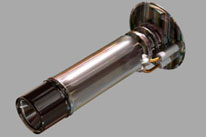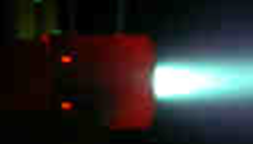Hollow cathode micro-thruster
Electric propulsion systems, utilising Gridded Ion Engines and Hall Effect Thrusters, are commonly used on Geostationary Communications Satellites to perform orbit top-up and/or manoeuvres (eg. Boeing 602HP, Boeing 702 and Astrium E3000). These systems offer significant propulsion system mass savings over conventional all chemical propulsion systems. However, at present auxiliary chemical propulsion systems are still required to perform other AOCS functions, adding to the mass and complexity of the overall propulsion systems.
The possibility of an “all electric” satellite, using only electric propulsion systems to perform all the orbit top-up and AOCS functions was suggested some time ago. Such an approach would require either an unconventional thruster accommodation (which may be non-optimal for some or all of the AOCS manoeuvres) or an auxiliary electric propulsion system must be used, which may in itself be complex and may not offer any significant advantage over a conventional chemical system.
Alternatively, if a simpler auxiliary propulsion system could be devised, which utilised the existing infrastructure of the primary electric propulsion system (tank, power supplies, gas feed systems), then significant mass and complexity savings could be made, and the “all-electric” satellite might become a reality. Cold gas thrusters and resistojet have been considered for this function, but the use of Xenon limits the performance of these systems to between 20 – 50 seconds specific impulse, which makes them uncompetitive.
In recent years the possibility of using a Hollow Cathode device as a thruster has been investigated.

